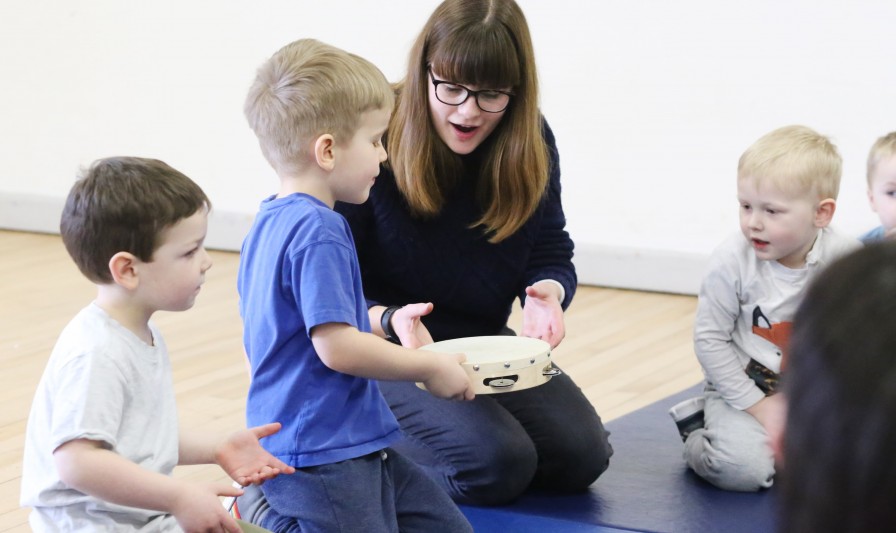Learning to be adaptable in Early Years music leadership

Hi I’m Ellie Kirtley. I am a trainee music leader, and have been taking part in Daisi Soundwaves project mentoring programme, being mentored by B Sharp for a year.
I have worked in a wide range of settings across the year, with young people with a range of needs, and of different ages, including Early Years settings.
After working in various different per-schools, I observed that different styles of leadership and types of musical interaction suited different settings. I learnt that it was important to be adaptable in the type of session that was planned, depending on how the children in different settings were used to interacting, and the different expectations from staff.
In settings where the children were used to sitting in a circle with staff, and taking turns in activities, a music session could be structured around the whole group working together in a circle. We could then do activities that required sitting as a whole group, turn taking and listening. If staff sat as part of the circle and participated alongside the children for the whole session, this created an encouraging environment, and children were likely to join in.
In other settings, where the day was structured differently, where children were not already used to ‘circle time’ it was more effective to use a different format for the music sessions, structured around one-to-one interactions. This avoided spending a lot of time getting started or changing between activities rather than on music activity. We experimented with seeing if the children would benefit more from a session if we set up the room with a variety of ‘interventions’ - various instruments, set up in different ways, and an area with props such as a set of scarfs. We also brought a speaker to play a few different types of music and see how the children would react.
By changing the approach, we had more sustained one-to-one musical interactions with the children. We were able to observe the children and see what interested them, using copying games or call and response to encourage engagement. Once I had adapted to a different kind of planning – one based on choosing specific interventions depending on the outcomes that we were focussing on, rather than having a fully structured plan, I felt more confident about the sessions. I learnt I had to be flexible with planning a session and the importance of adapting to the environment.
I looked at different approaches with activities too. For this age group it was good to repeat material so it would become more familiar over the weeks. Instead of singing a song and then moving on to a different one, we would reuse the song but use it in different ways. For example, we would sing ‘If you’re happy and you know it’ and do the actions but then for the next week, we would use a stretchy piece of material that everyone would hold on to and change the actions to high and low with the material. We found that this was a brilliant icebreaker for a first session, particularly if we had puppets to bounce into the air. I noticed the children were more likely to sing when we used the material as if it was a distraction.
We also explored dynamics, tempo, using different instruments, movement activities and props. We used specific songs and rhymes to focus on speech development and number learning. One activity could open up various different approaches. If an activity did not work at one session, we would not abandon it immediately, but would think again, adapt it and try it with a different approach.
When we evaluated the project, Staff told us that the music sessions had benefited children’s musical understanding and they had got more interested in music. They were also more confident to join in, and speak in the group. It is well documented that music enhances other subjects and this became evident when one teacher informed us that over the 6 weeks the children had greatly improved in PE due to understanding terms such as fast and slow that we had covered in our sessions and their interest in music was increasing.
I now understand the importance of being flexible with what we had planned and adapting to the environment. Working in several pre-schools, I saw many different expectations of how children behaved in sessions, ways of communicating, methods and teaching styles. One thing that will stay with me is how I can now predict what is going to work by how well the children can get into a circle!

